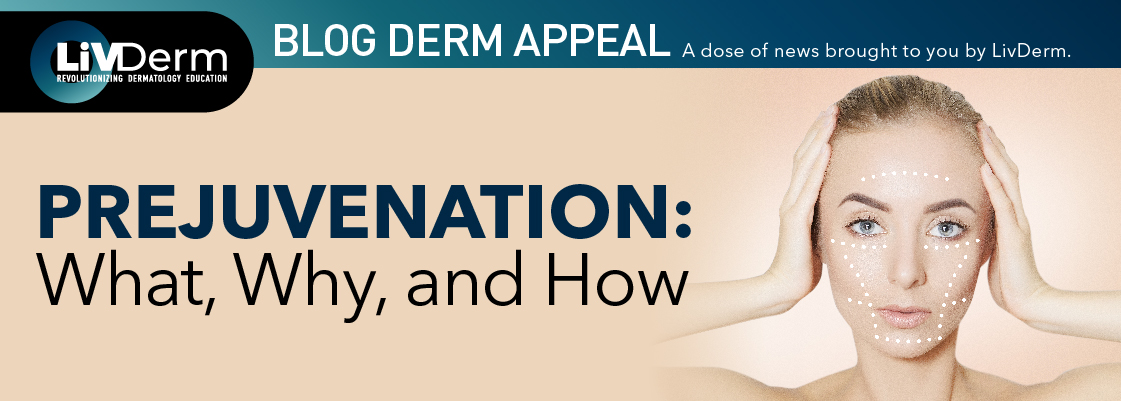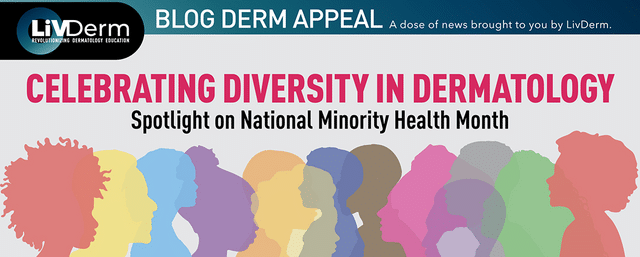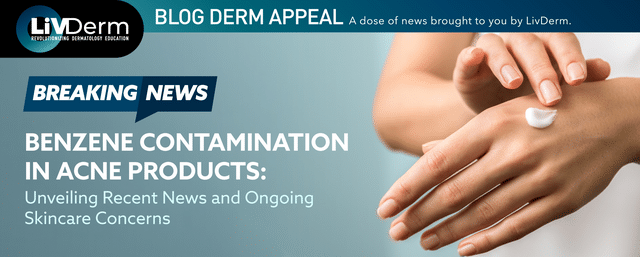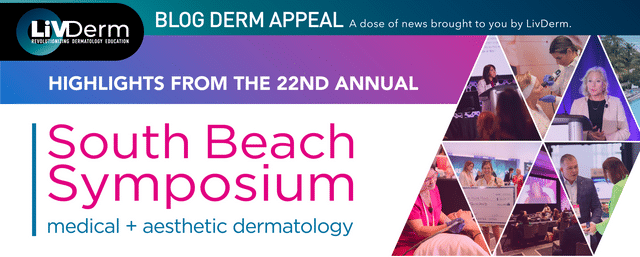The services of cosmetic dermatologists have long been sought after to reverse the signs of aging. Preventative measures such as sunscreen and proper skincare were the recommended ways to delay the inevitable loss of firmness, fine lines, discoloration, and other visible signs that the skin has aged. But recently, a much younger crowd has been seeking aesthetic services even before these signs appear. Dubbed “prejuvenation” this phenomenon of 20- and 30-somethings receiving cosmetic procedures – once sought primarily by patients in their 40s and above – is increasing in popularity. Providers can capitalize on this younger clientele while being mindful of how techniques and services should be tailored to target prevention instead of correction.
What is prejuvenation?
Prejuvenation has taken the aesthetic community by storm. The fastest-growing field in both cosmetic dermatology and plastic surgery, prejuvenation combines preventive measures with nonsurgical and surgical aesthetic treatments. The technology used to reverse signs of aging is now being used to prevent those same effects. Namely, the levels and quality of collagen – the key element in retaining youthful skin appearance – is a prevention target. Some dermatologists use the phrase “stop the drop” to describe prejuvenation, or using aesthetic strategies to build collagen and discourage the march of gravity. Industry experts note that it is easier to prevent appearance-related signs of aging than to treat them once they appear.
Why is prejuvenation on the rise?
The current generation of YouTubers, Tik-Tokkers, Instagramers, and other social media influencers have one significant commonality: they are looking at themselves on camera much more than previous generations. Also called the “Zoom boom,” this phenomenon of seeing oneself (and perceived problem areas) is leading to more appearance dissatisfaction and interest in corrective measures. Additionally, advances in the availability of dermatology services and the ability for young individuals to earn a substantial income through social media platforms means that a younger crowd can access aesthetic services more readily than previous generations.
How do aesthetic providers tailor their services for the prejuvenation client?
Kenneth A. Arendt, MD, a premier academic and clinical dermatologist of SkinCare Physicians in Boston, has six suggestions for the prejuvenation patient:
- Photoprotection. The easiest, most effective, and most inexpensive anti-aging regimen anyone can use is one that provides protection from the sun. Regular use of sunscreens will not only protect your skin from skin cancer but will also help prevent fine wrinkles, sun-induced brown spots, and the overall loss of collagen that lead to visible signs of skin aging.
- Retinoids and antioxidants. Most anti-aging products focus on protecting against ultraviolet rays of the sun, soaking up damaging free radicals, and stimulating collagen formation. Collagen is the major protein backbone of the skin that gives it structure, resilience and ultimately helps plump up the skin and smooth out wrinkles. Retinoids are the most effective of the topical agents available for stimulating collagen; they also alter the way skin grows, diminishing photodamage. In adults, it makes sense to start using effective topical agents at the first signs of photoaging, which is often in the 20s.
- Neuromodulators. Lines and wrinkles on the upper face form over time due to repetitive folding of the skin that occurs with everyday use of the muscles of facial expression. It is not uncommon to see patients even in their early 20s with deep and prominent forehead wrinkles and frown lines. The injection of neuromodulators relaxes the muscles that form horizontal forehead lines and vertical frown lines that often make people look upset or angry. Additionally, neuromodulators can be used around the eyes and eyebrows to help shape, open and brighten the eyes. A good time to start is often in the late 20s to early 30s.
- Resurfacing. Procedures that take away sun damage like stubborn brown spots and fine wrinkles can also stimulate the formation of new collagen. Fractional laser resurfacing and intense pulsed light treatments allow patients to erase sun damage and improve skin texture with minimal downtime. Patients can benefit from these treatments starting in their 20s as the skin begins to show signs of early sun damage.
- Fillers. A hallmark of aging skin is loss of volume; the natural reduction in collagen, restructuring of bone, and subsequent movement of facial fat pads result in the formation of wrinkles, sagging, and hollows on the cheeks. Dermatologists can replace this volume loss using hyaluronic acid fillers, which are composed of naturally occurring sugar molecules. By gradually and slowly adding back what the skin is naturally losing, patients can keep up with the rate of age-related volume loss in real-time with very little discomfort and downtime. Studies have shown that these changes can occur as early as the 30s in age and that placement of hyaluronic acid fillers can help stimulate the production of collagen.
- Skin tightening. The use of nonsurgical radiofrequency or ultrasound skin tightening procedures can help even younger patients achieve visible skin tightening and induce preventative tightening of collagen. By heating the skin in a deep and uniform fashion, these technologies tighten the forehead and lift the brows, enhancing the appearance of eyes, cheeks, jawline, and upper neck. When used preventatively, these services can be performed just once every one or two years.
Key takeaway
Providers can take advantage of the surge in requests for cosmetic procedures by tailoring their services thoughtfully to prevent signs of aging in their younger patients.
Sources:
- https://plasticsurgerytb.com/blog/why-dermal-fillers-are-popular-with-millennials/
- https://www.totaldermatology.com/blog/what-is-prejuvenation-and-why-do-it/
- https://www.skincarephysicians.net/blog/cosmetic-dermatology/prejuvenation-a-six-step-guide-against-skin-aging/
















